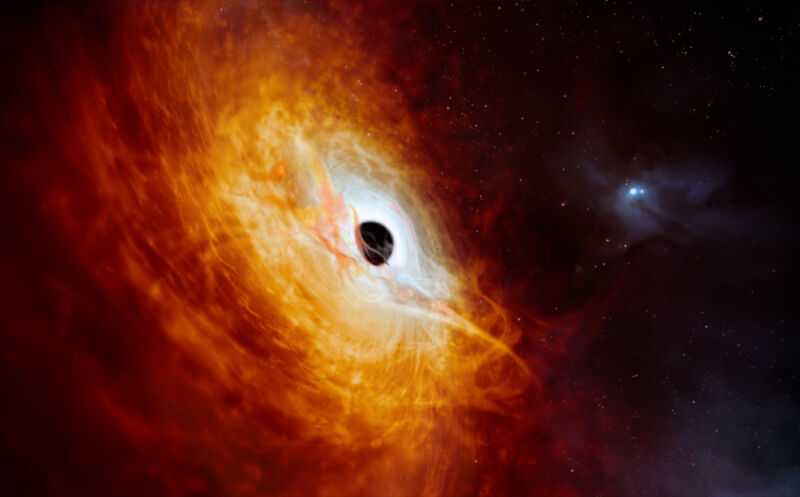Newly spotted black hole has mass of 17 billion Suns, adding another daily

Enlarge (credit: ESO/M. Kornmesser)
Quasars initially confused astronomers when they were discovered. First identified as sources of radio-frequency radiation, later observations showed that the objects had optical counterparts that looked like stars. But the spectrum of these ostensible stars showed lots of emissions at wavelengths that didn't seem to correspond to any atoms we knew about.
Eventually, we figured out these were spectral lines of normal atoms but heavily redshifted by immense distances. This means that to appear like stars at these distances, these objects had to be brighter than an entire galaxy. Eventually, we discovered that quasars are the light produced by an actively feeding supermassive black hole at the center of a galaxy.
But finding new examples has remained difficult because, in most images, they continue to look just like stars—you still need to obtain a spectrum and figure out their distance to know you're looking at a quasar. Because of that, there might be some unusual quasars we've ignored because we didn't realize they were quasars. That's the case with an object named J0529−4351, which turned out to be the brightest quasar we've ever observed.

